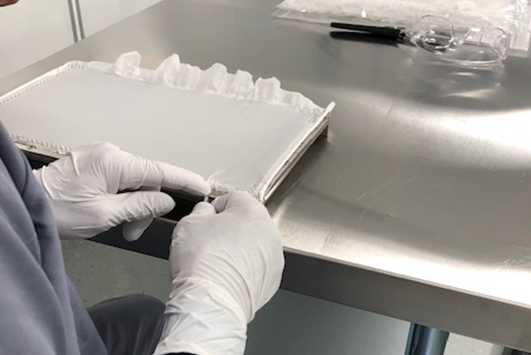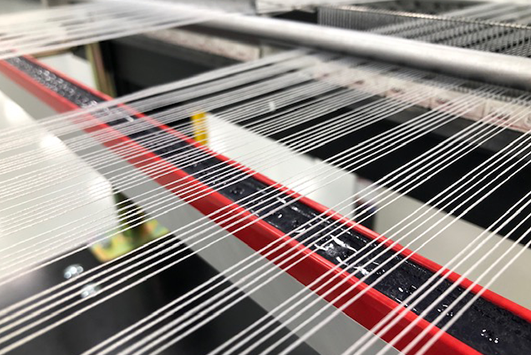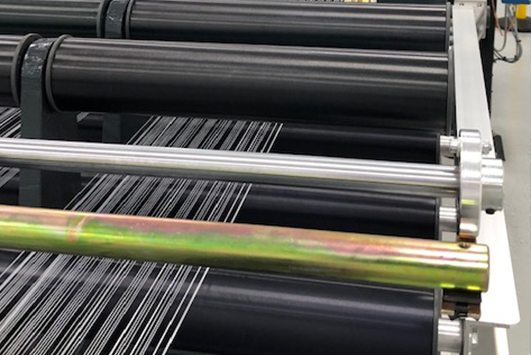

Minimally invasive surgical approaches have the potential to significantly improve overall patient outcomes, as well as reduce overall costs to the healthcare system.
An increasingly active and aging population combined with surgeons embracing arthroscopic/endoscopic procedures, has resulted in an increased demand for these minimally invasive procedures to evaluate or treat various clinical indications. Today’s medical device companies have been successful at bringing smaller, lower profile medical devices to market that support less invasive approaches in large part because of the incorporation of advanced biomedical textiles. Through partnerships with biomedical materials developers and companies that process those materials in to medical fabric structures, medical device OEMs can design and commercialize devices across a broad range of specialties such as orthopedics, cardiology, tissue engineering, sports medicine, and general surgery that offer lower profiles without sacrificing strength and other key mechanical characteristics.
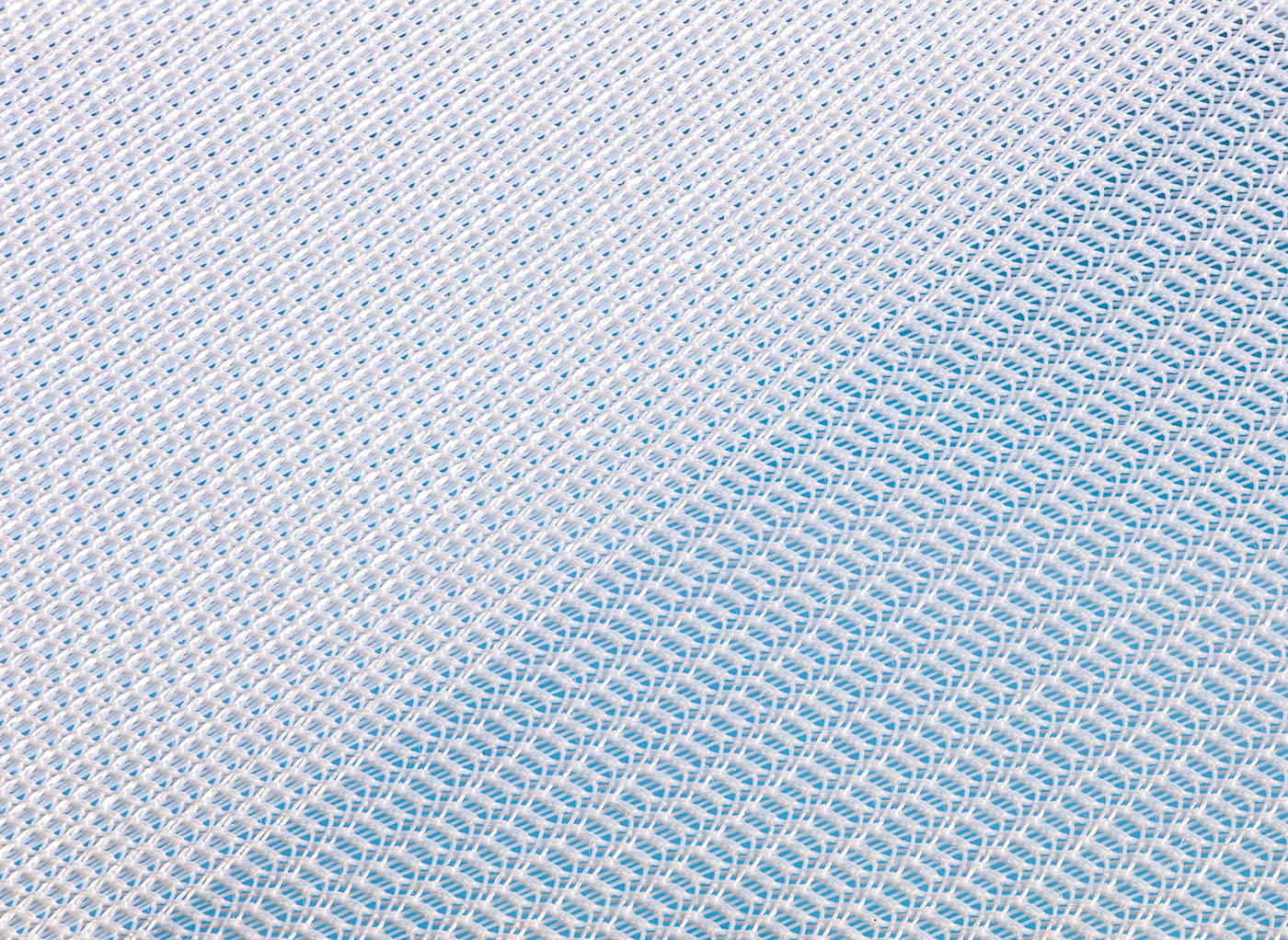
It’s not just smaller fibers and thinner fabrics that are driving biomedical textile innovation. At Cortland Biomedical, we’ve revisited the fundamentals of textile technology to challenge the status quo. Our thoughtful design concepts incorporate new methods of changing fabric density, pattern or fiber orientation on the fly, resulting in products that get closer to biomimicry than ever before. We can dial in and isolate properties to localized regions of fabrics in a way that simply isn’t possible without the most modern textile forming equipment. We thrive on the ability to blend raw material properties and bio textile geometry to yield properties and performance characteristics previously unimagined.
Biomedical Textile Engineering Materials 101
Today’s biomedical textile engineers enjoy access to a wide range of high-performance textile materials including:
- Ultra-High Molecular Weight Polyethylene (UHMWPE)
- Polyester (PET)
- Liquid Crystal Polymer (LCP)
- Polyether Ether Ketone (PEEK)
- Polypropylene (PP)
- Aramids
- Polyglycolide (PGA)
- Polylactide (PLLA)
- Polytetrafluoroethylene (PTFE)
As well as a significant quantity of metals and alloys including:
- Nitinol
- Stainless Steel
- Cobalt-Chrome
- Platinum
- Titanium
- Tungsten
Benefits of Biomedical Textiles Engineering for Orthopedic and Surgical Applications
At Cortland Biomedical we custom design high-performance biomedical textile structures applying our expertise in biomedical textile engineering and advanced fabric design methods. This includes working with synthetic and metallic biomaterials for a wide spectrum of applications across the medical device industry.
Our unique combination of advanced equipment, a seasoned biomedical textile-specific engineering team, and first-rate R&D capabilities allows us to tackle your complex challenges with the innovation and agility you expect and deserve.
Our state-of-the-art facility reflects our commitment to offering superior, full-scale biomedical textile production, including:

Braided solutions that feature high radial expansion and compaction, kink resistance, or can include a combination of materials; varying density or mandrel profiles for near-net shapes.

Knitted components, which can maximize pore size and stability for soft tissue repair applications. Our knit technology can vary fabric density and yarn orientation to create low profile fabrics with specialized regions for tissue in-growth and increased flexibility.

Woven fabric design with ultra-high density, low profile woven fabrics that are flat, tubular, branched or tapered. Our textile design capabilities allow for the inclusion of holes, reinforcement areas and other customizations, to allow you to realize your device’s potential.

Textile assembly & fabrication from loops to eye splices to control cables. Tomorrow’s medical devices require endless innovation in the way the structure interacts with the patient’s anatomy. Novel textile fabrications allow our engineers to provide you and your end-users with game changing solutions to common surgical challenges.
How can we help?
Our engineers work collectively with you to aid in the selection of biomedical textile materials that will provide long-term performance for the particular application. Materials that we use may be supplied by you or sourced by us.
Features & Benefits of Biomedical Textiles for Medical Devices
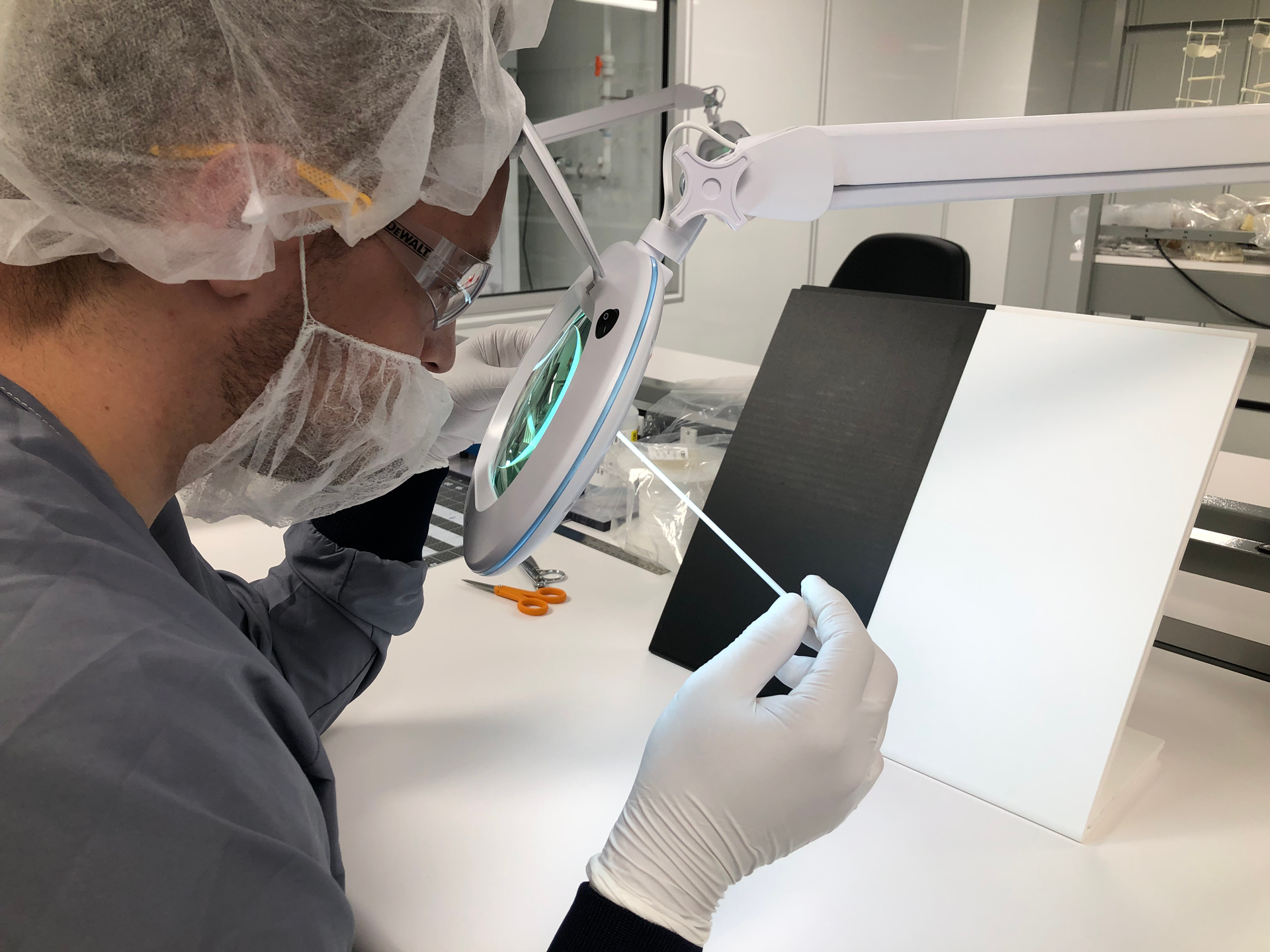
- Extremely flexible to aid in surgery and successfully integrate with the body
- Transparent or colored for improved visibility (depending on use)
- High degree of radial and tensile strength
- Thin and lightweight
- Biocompatible
- Manufactured with a validated process
- Extremely customizable (weave, weight, thickness, rigidity)
- Support low-profile delivery



